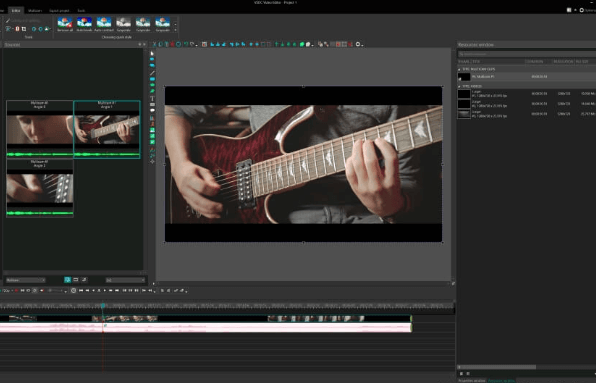How to Edit Multi-Camera Footage Using a Video Editor

Editing multi-camera footage presents unique challenges that require a methodical approach to achieve a seamless and engaging narrative. By effectively organizing your clips and employing synchronization techniques, you can create a solid foundation for your project. Selecting the right angles and maintaining visual continuity are crucial to enhancing the viewer’s experience. As we explore the essential steps in this process, it becomes evident that attention to detail can make all the difference in the final outcome. What strategies can elevate your editing process to the next level?
Preparing Your Footage
Before diving into the editing process, it is essential to meticulously prepare your footage to ensure a seamless workflow.
Effective file organization is paramount; create a structured directory for each clip to enhance accessibility.
Additionally, implement a reliable footage backup strategy to safeguard your data against potential loss.
These preparatory steps foster a creative environment, allowing for greater freedom during the editing phase.
See also: Benefits of AI Face Swap Technology in Content Creation
Syncing Multi-Camera Clips
When working with multi-camera footage, syncing clips is crucial for maintaining continuity and coherence in your final edit.
Utilize audio synchronization to align clips effectively, focusing on distinct sound cues.
Employ timing adjustments to fine-tune the alignment, ensuring that dialogue and actions match seamlessly across angles.
This meticulous process enhances the viewer’s experience, allowing for a dynamic and engaging presentation of your footage.
Selecting Angles and Cuts
Selecting the right angles and cuts in multi-camera footage is essential for crafting a compelling narrative. Effective angle selection enhances viewer engagement, while seamless cut transitions ensure a fluid storytelling experience.
Analyze each shot’s emotional impact, and choose perspectives that elevate the scene. Balance dynamic angles with steady shots to create a rhythm that captivates your audience and supports the narrative’s intent.
Finalizing Your Edit
With angles and cuts carefully chosen, the next phase involves refining the edit to ensure a polished final product.
This includes color grading to enhance visual appeal, audio mixing for balanced sound, and applying transition effects for seamless narrative flow.
Once these elements harmonize, proceed to project exporting, ensuring the format meets your distribution needs while preserving the intended quality.
Conclusion
In the intricate realm of multi-camera editing, the meticulous organization and synchronization of footage may seem laborious, yet this effort culminates in a seamless narrative flow that belies the complexity of the process. The selection of dynamic angles, while ostensibly a creative endeavor, ultimately serves the purpose of clarity and engagement. Ironically, the true artistry lies not in the flamboyance of edits, but in the subtlety of transitions that render the final product deceptively simple, yet profoundly effective.





